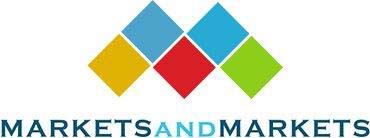The global GLP-1 Agonists Market, valued at US$53.74 billion in 2024, expanded to US$64.42 billion in 2025 and is projected to grow at a robust CAGR of 13.0% from 2025 to 2033, reaching US$170.75 billion by the end of the forecast period. This unprecedented growth reflects rising demand for metabolic therapies, accelerated manufacturing scale-ups, and broader clinical adoption across diabetes, obesity, and emerging cardiometabolic indications.
As pharmaceutical companies expand API production, strengthen fill–finish capabilities, and scale up advanced biologics manufacturing, supply constraints are gradually easing—enabling broader market penetration globally. Simultaneously, expanding clinical approvals for cardiovascular and metabolic conditions continue to anchor GLP-1 agonists as one of the most transformative drug classes of the decade.
Download PDF Brochure: https://www.marketsandmarkets.com/pdfdownloadNew.asp?id=218746186
Market Growth Drivers: From Obesity Epidemic to Therapeutic Expansion
Several macro-level factors are accelerating the uptake of GLP-1 agonists:
1. Rising Global Prevalence of Obesity & Type 2 Diabetes
Obesity and T2D cases continue to rise across all regions, increasing dependence on GLP-1 agonists for glycemic control, weight reduction, and cardiovascular risk management. Their proven clinical benefits and strong guideline endorsements solidify their position as a primary therapeutic class.
2. Indication Expansion Unlocks New Patient Populations
Regulatory approvals for conditions beyond diabetes—including obesity, cardiovascular protection, and metabolic liver disease—are accelerating adoption across diverse patient segments.
3. Manufacturing Capacity Expansion
Both innovators and contract manufacturers are investing heavily in:
-
API scale-up
-
Fill–finish facilities
-
Global distribution networks
-
Strategic supply chain agreements
These investments ensure sustained supply growth to match surging demand worldwide.
4. Strong Physician and Patient Adoption
Enhanced efficacy, improved safety profiles, and innovative delivery formats—especially once-weekly injectables—are increasing real-world adherence and long-term treatment success.
Market Segmentation Insights
By Indication: Diabetes Segment Leads in 2024
In 2024, diabetes dominated the GLP-1 agonists market due to:
-
Broad regulatory approvals across major markets
-
Strong evidence supporting glycemic and weight management benefits
-
Established place in clinical guidelines
-
Large global patient population requiring chronic treatment
As cardiovascular and weight-loss indications scale, obesity is expected to expand rapidly through the forecast period.
By Route of Administration: Subcutaneous Injections Maintain Leadership
The subcutaneous segment accounted for the largest market share in 2024, driven by:
-
Proven long-term clinical efficacy
-
Patient acceptance of weekly self-injectable devices
-
Supportive reimbursement pathways in key markets
-
Sustained-release formulations allowing enhanced convenience
Oral GLP-1 formulations are expected to witness strong future growth, driven by pipeline innovation and improved accessibility.
Regional Analysis: Asia Pacific Emerges as a High-Growth Hub
The GLP-1 agonists market spans six major regions:
-
North America
-
Europe
-
Asia Pacific
-
Latin America
-
Middle East
-
Africa
Among these, the Asia Pacific region is projected to register the highest CAGR through 2033, supported by:
-
High prevalence of obesity and diabetes
-
Early adoption of innovative therapies
-
Strong reimbursement frameworks
-
Expanding clinical infrastructure
-
Significant marketing and distribution investments
-
Large-scale manufacturing expansions across India, China, and South Korea
North America and Europe continue to dominate revenue share due to high treatment affordability, awareness, and advanced healthcare systems.
Competitive Landscape: Highly Consolidated Market with Strong Innovation Pipelines
The GLP-1 agonists market is dominated by a few global leaders, each pursuing aggressive expansion strategies:
1. Novo Nordisk (Denmark)
-
Global leader with blockbuster products: Ozempic, Wegovy, Rybelsus
-
Major expansions in manufacturing capacity
-
Strong R&D pipeline targeting cardiovascular, metabolic liver disease (MASH), CKD, and obesity
-
Heavy investments in AI-driven drug discovery, digital therapeutics, and novel formulations
Novo Nordisk continues to dominate due to scale, scientific leadership, and rapid global rollouts.
2. Eli Lilly (US)
-
Market disruptor with tirzepatide (Mounjaro, Zepbound)—a dual GIP/GLP-1 agonist with superior clinical outcomes
-
Advancing next-generation oral GLP-1s such as orforglipron
-
Expanding global manufacturing footprint to meet demand
-
Strong focus on metabolic and cardiovascular pipeline diversification
Eli Lilly’s dual agonist approach positions it as a strong competitor challenging traditional GLP-1 leadership.
3. Sanofi (France)
-
Offers Soliqua, a fixed-ratio combination of insulin glargine + lixisenatide
-
Strong global distribution with launches in 80+ countries
-
Strategic focus on emerging markets and simplified chronic care management
-
Leveraging robust supply chain and combination therapy innovation
Sanofi remains a key player, despite shifting R&D focus toward immunology and specialty care.
Market Outlook: A Decade of Transformation Ahead
With obesity and diabetes rising sharply, GLP-1 agonists are shifting from single-indication therapies to multi-system metabolic drugs capable of:
-
Reducing cardiovascular risk
-
Promoting sustainable weight loss
-
Improving inflammatory and metabolic biomarkers
-
Supporting long-term chronic disease management
The market’s trajectory toward US$170.75 billion by 2033 highlights its status as one of the most disruptive and high-growth segments in global pharmaceuticals.
Request Sample Pages: https://www.marketsandmarkets.com/requestsampleNew.asp?id=218746186

